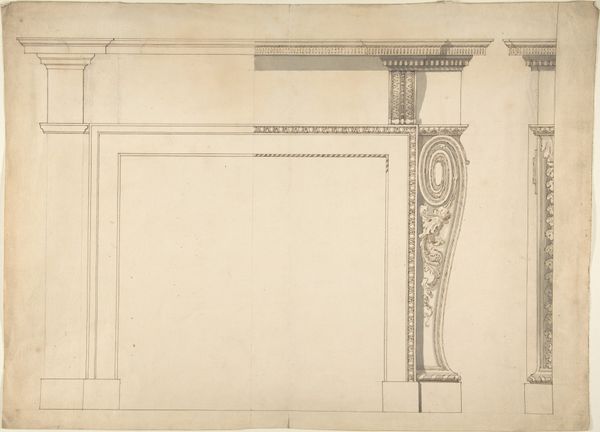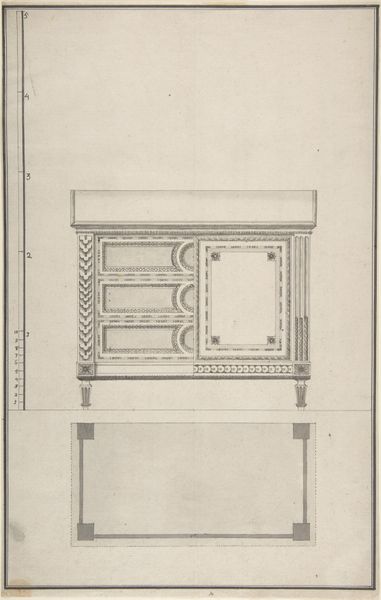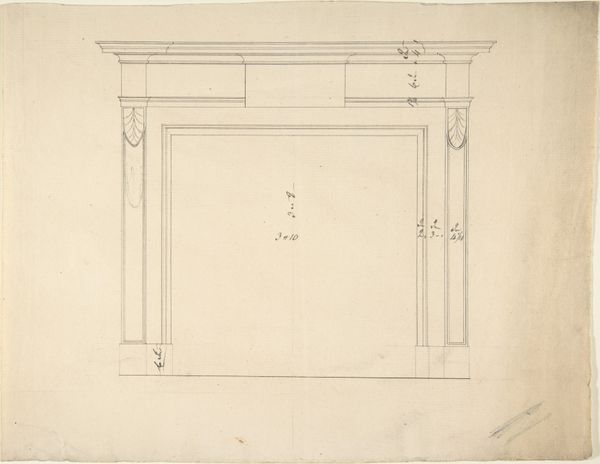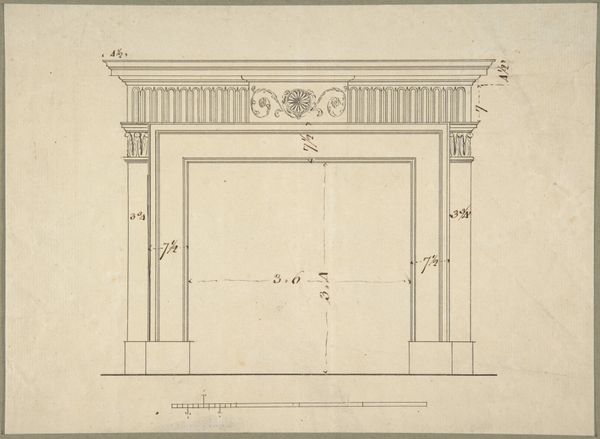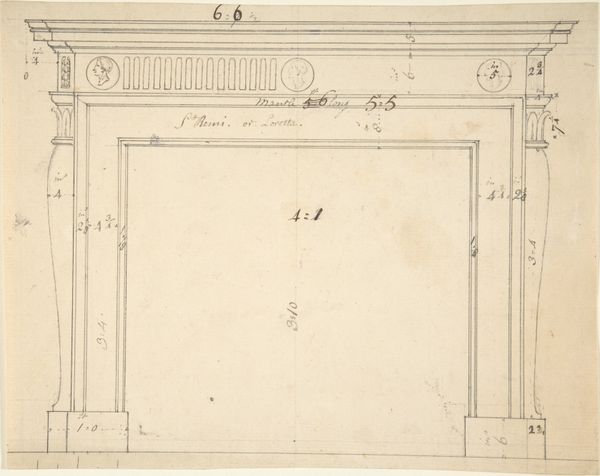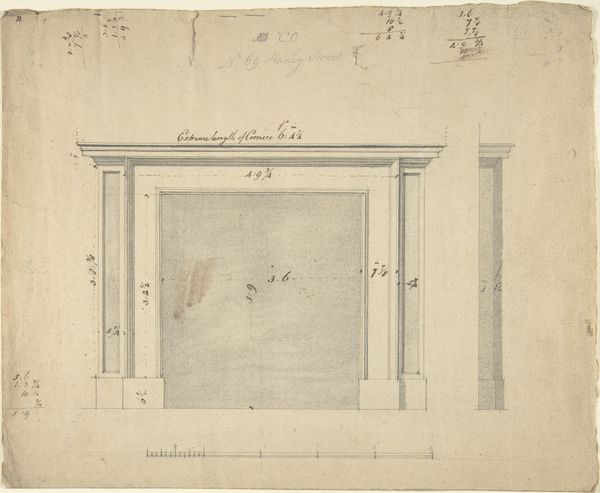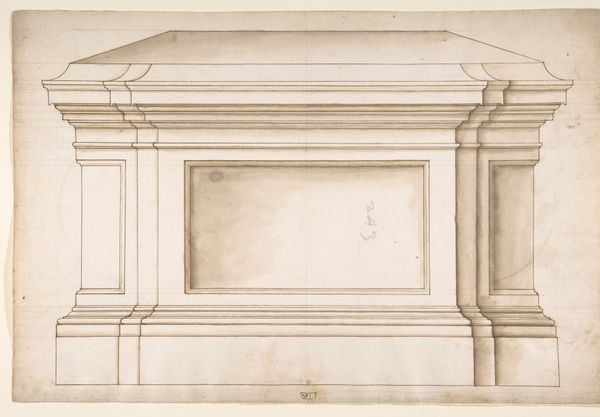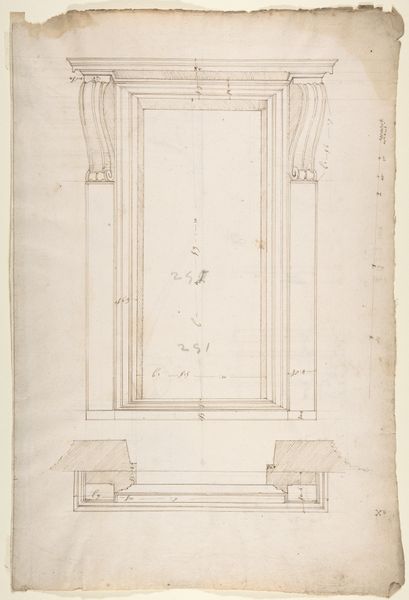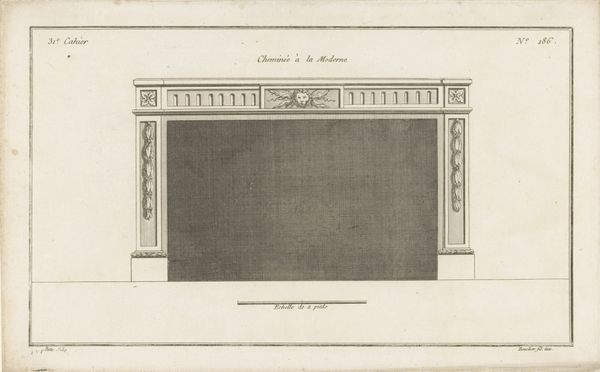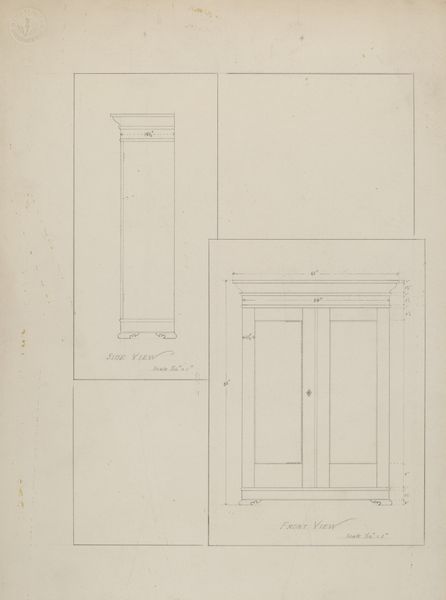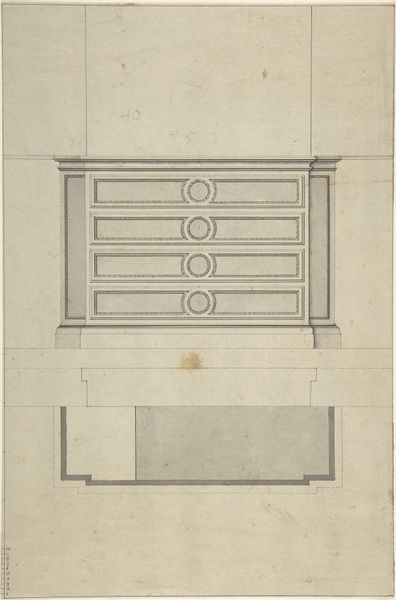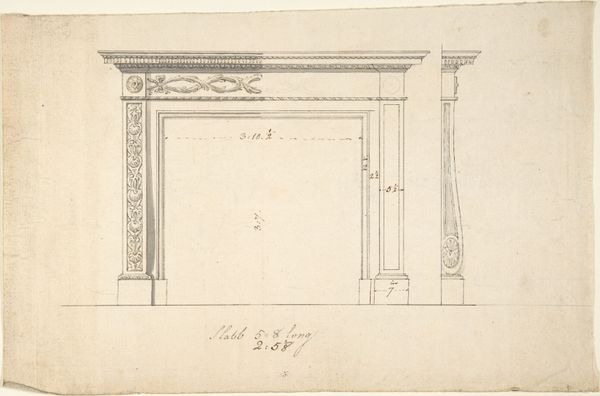
drawing, print, pencil, architecture
#
drawing
# print
#
classical-realism
#
form
#
pencil
#
line
#
architecture
Copyright: Public Domain
Sir William Chambers designed this chimneypiece, likely in the late 18th century, using pen and ink with grey wash on paper. The neoclassical design is rendered with precision. Note the clean lines and measured proportions. The smooth paper allows for fine detail, crucial for conveying the intended look of carved stone or marble. Chambers’ skill lies in translating three-dimensional architectural elements onto a two-dimensional surface. This drawing wasn't just an artistic exercise; it was a blueprint for skilled artisans. Stonemasons, carvers, and builders would have relied on such drawings to bring Chambers’ vision to life. Consider, too, the social context. Fireplaces were central to domestic life, and elaborate designs like this were symbols of wealth and status. The labor-intensive process of realizing such a chimneypiece underscores the hierarchies of the time. This drawing shows not just a design, but also a nexus of materials, skills, and social relations.
Comments
No comments
Be the first to comment and join the conversation on the ultimate creative platform.
